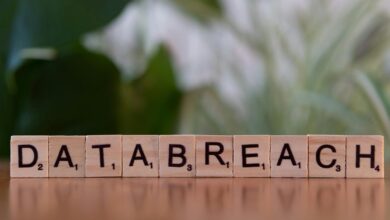Track Caller Location Info: 3606338365, 3607125369, 3607610751, 3612801004, 3616023841, 3616024031

The ability to track caller location information has become increasingly relevant in today’s digital landscape. With specific numbers such as 3606338365 and 3616024031 raising concerns, the question arises: how can individuals effectively discern the origin of these calls? Utilizing tools like TrueCaller and Life360 offers potential insights. However, what implications do these technologies have for personal safety and identifying scams? Exploring these aspects could provide crucial awareness for users navigating unknown calls.
Understanding Caller ID and Location Services
While many individuals rely on Caller ID to identify incoming calls, the underlying technology encompasses more than just names and numbers; it also integrates location services that can reveal the geographical origin of a call.
Analyzing caller ID features highlights the importance of location accuracy, as this information can provide users with insights into potential scams or unfamiliar contacts, enhancing their decision-making capabilities.
How to Trace Caller Locations
Tracing caller locations can be approached through various methods that leverage technology.
One might consider utilizing Caller ID services, mobile apps specifically designed for tracking, or online reverse lookup tools.
Each of these options presents unique capabilities and limitations, prompting further exploration into their effectiveness and reliability.
Utilize Caller ID Services
Numerous individuals seek effective methods to trace caller locations, and utilizing caller ID services has emerged as a popular option.
Key considerations include:
- Service features and their effectiveness.
- Tracking accuracy in various regions.
- Privacy concerns regarding user data.
- Cost implications of different service providers.
Mobile Apps for Tracking
Caller ID services provide a foundation for identifying incoming calls, yet many individuals seek more advanced solutions for locating callers.
Mobile tracking applications offer enhanced caller verification features, allowing users to pinpoint locations in real-time. These tools raise questions about privacy and consent, prompting a critical evaluation of their use.
Ultimately, individuals must balance the need for information with the desire for personal freedom.
Online Reverse Lookup Tools
Online reverse lookup tools serve as a valuable resource for individuals seeking to identify the origins of unknown phone numbers.
The benefits of these tools include:
- Enhanced tracking accuracy
- Access to caller information
- Identification of potential spam
- Improved safety measures
Importance of Knowing Caller Identity
Understanding caller identity plays a crucial role in enhancing personal safety and preventing fraudulent calls.
By identifying who is on the other end of the line, individuals can make more informed decisions about whether to engage with the caller.
This awareness not only helps in safeguarding personal information but also in mitigating the risks associated with scams and unwanted solicitations.
Enhance Personal Safety
While the convenience of modern communication brings people closer, the potential risks associated with unknown callers cannot be overlooked.
Understanding caller identity enhances personal safety by promoting:
- Emergency contacts readiness
- Effective safety drills
- Collaboration with neighborhood watch
- Utilization of personal alarms
Implementing strong privacy settings and communication strategies fosters situational awareness, empowering individuals with self-defense methods and ensuring a proactive approach to personal security.
Prevent Fraudulent Calls
Recognizing the identity of callers plays a significant role in preventing fraudulent calls, a pervasive issue that affects countless individuals.
Effective fraud detection hinges on this knowledge, enabling individuals to assess risks associated with unknown numbers. By prioritizing caller identity, people can enhance scam prevention strategies, fostering a safer communication environment.
Awareness and vigilance are essential in combating the ever-evolving tactics of fraudsters.
Common Scams and Suspicious Calls
As individuals navigate the complexities of modern communication, they often encounter a variety of scams and suspicious calls designed to exploit vulnerabilities.
Enhancing scam awareness is vital. Common types include:
- Fake lottery wins
- IRS impersonation
- Tech support scams
- Prize or sweepstakes fraud
Understanding these patterns of suspicious behavior can empower individuals to protect themselves against deception and maintain their freedom in communication.
Tools and Apps for Caller Location Tracking
In an age where communication is instantaneous, the ability to track caller locations has become increasingly relevant for individuals concerned about their safety and privacy. Various tools and apps offer caller tracking capabilities, enhancing location accuracy for users. Below is a comparison of some popular options:
| Tool/App | Location Accuracy |
|---|---|
| TrueCaller | High |
| Life360 | Very High |
| TrapCall | Moderate |
| Geo Tracker | High |
| Find My Device | Very High |
Best Practices for Handling Unknown Calls
How should one approach the challenge of handling unknown calls?
Employing effective unknown call strategies is essential.
Consider these call screening techniques:
- Let the call go to voicemail.
- Research the number online.
- Use a caller ID app for identification.
- Trust instincts; if it feels suspicious, do not engage.
These methods empower individuals to manage unknown calls with confidence and discretion.
Conclusion
In the intricate web of communication, understanding caller location information serves as a beacon of awareness in an often murky landscape. By leveraging tools like TrueCaller and Life360, individuals can navigate the shadows of unknown calls with greater confidence. The pursuit of clarity in caller identity not only shields against potential scams but also empowers personal safety. As technology evolves, so too does the imperative to remain vigilant, transforming uncertainty into informed decision-making in a connected world.




